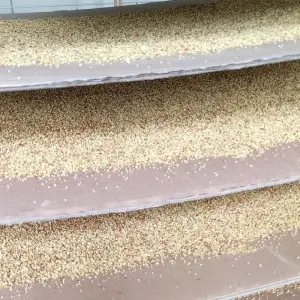Oct . 07, 2024 02:35 Back to list
best mango fruit bagging technique
The Best Mango Fruit Bagging Technique Ensuring Quality and Sustainability
Mangoes, often referred to as the “king of fruits,” are a delight enjoyed by many across the globe. Their sweet flavor and aromatic scent make them a favorite among consumers. However, ensuring the quality of mangoes throughout their growth and harvesting process is a critical aspect of mango production. One highly effective method that has gained attention in recent years is fruit bagging. This article delves into the best mango fruit bagging techniques, emphasizing their benefits, methods, and impact on sustainability.
The Importance of Fruit Bagging
Fruit bagging is a horticultural technique where fruits are enclosed in protective bags during their growth phase. This practice serves multiple purposes it shields fruit from pests and diseases, prevents sunburn, and reduces chemical pesticide usage. As consumers become more health-conscious and environmentally aware, the demand for organically grown and sustainably produced fruits has surged. Fruit bagging aligns perfectly with these trends, making mangoes not only healthier but also more appealing to the market.
Choosing the Right Bags
Selecting the appropriate type of bags is crucial for effective fruit bagging. The most commonly used materials include paper, cloth, and plastic. Each type has its pros and cons.
1. Paper Bags These are popular for their breathability, allowing air exchange while protecting fruits from external factors. They are biodegradable, which aligns with sustainable practices. 2. Cloth Bags Made from natural fibers, cloth bags are reusable and biodegradable. They provide excellent protection against pests while allowing moisture to escape, reducing the risk of fungal diseases.
3. Plastic Bags While plastic offers greater resistance to moisture and pests, it can create a micro-climate that may lead to fungal growth if moisture builds up inside the bag. To mitigate this risk, it is important to use perforated plastic bags that allow for airflow.
The Bagging Process
The process of bagging mangoes generally involves several key steps
1. Timing It is essential to bag mangoes at the right stage of growth. Typically, fruit bagging should occur when the mangoes reach about 10-15% of their mature size. This timing ensures that the fruit benefits from protection during crucial development phases.
best mango fruit bagging technique

2. Preparation Before bagging, it is important to ensure that the mangoes are healthy and free from diseases. The branches should be gently cleaned to prevent any pest or fungal contamination.
3. Bag Application Using gentle hands, each mango should be placed in the individual bag carefully. The bags should be secured to avoid any movement that could damage the fruit. Tags can be used to mark the date of bagging for future reference.
4. Monitoring Regular inspections are necessary to ensure that the bags remain intact and that the fruits are developing well. Any signs of damage to the bags or fruit should be addressed promptly.
Benefits of Fruit Bagging
The benefits of fruit bagging extend beyond just fruit protection.
1. Higher Quality Produce Bagged mangoes typically exhibit less blemishing and uneven color, resulting in a more visually appealing product. They are also less likely to suffer from rot due to fungi.
2. Reduced Pest Damage By protecting the fruit from fruit flies, birds, and other pests, bagging significantly lowers the need for chemical interventions.
3. Environmental Sustainability Reduced pesticide use aligns with environmentally friendly practices. Additionally, using biodegradable or reusable bags minimizes waste.
4. Market Advantage Bagged mangoes can command higher prices in the market due to their superior quality and the organic appeal.
Conclusion
It is clear that fruit bagging is one of the best techniques for producing high-quality mangoes while fostering sustainable agriculture. By utilizing the right materials, following proper techniques, and maintaining diligent monitoring, mango producers can ensure their fruits are not only delectable but also environmentally friendly. As the market continues to shift towards sustainability, adopting innovative methods like fruit bagging will become increasingly essential for success in the mango industry.
-
Eco Fruit Paper Bags for Peak Freshness | Durability Focused
NewsJul.31,2025
-
Pollen Peach Tree for Pure Pollination and High-Quality Peach Pollen
NewsJul.30,2025
-
Premium Cherry Pollen for Pure Pollination & Different Types
NewsJul.30,2025
-
Artificial Pollination Solutions for Various Plant Pollen Types
NewsJul.29,2025
-
Artificial Pollination Solutions for All Plant Pollen Types
NewsJul.29,2025
-
Premium Plant Pollen for Pure Pollination & Pollen Block Solutions
NewsJul.29,2025